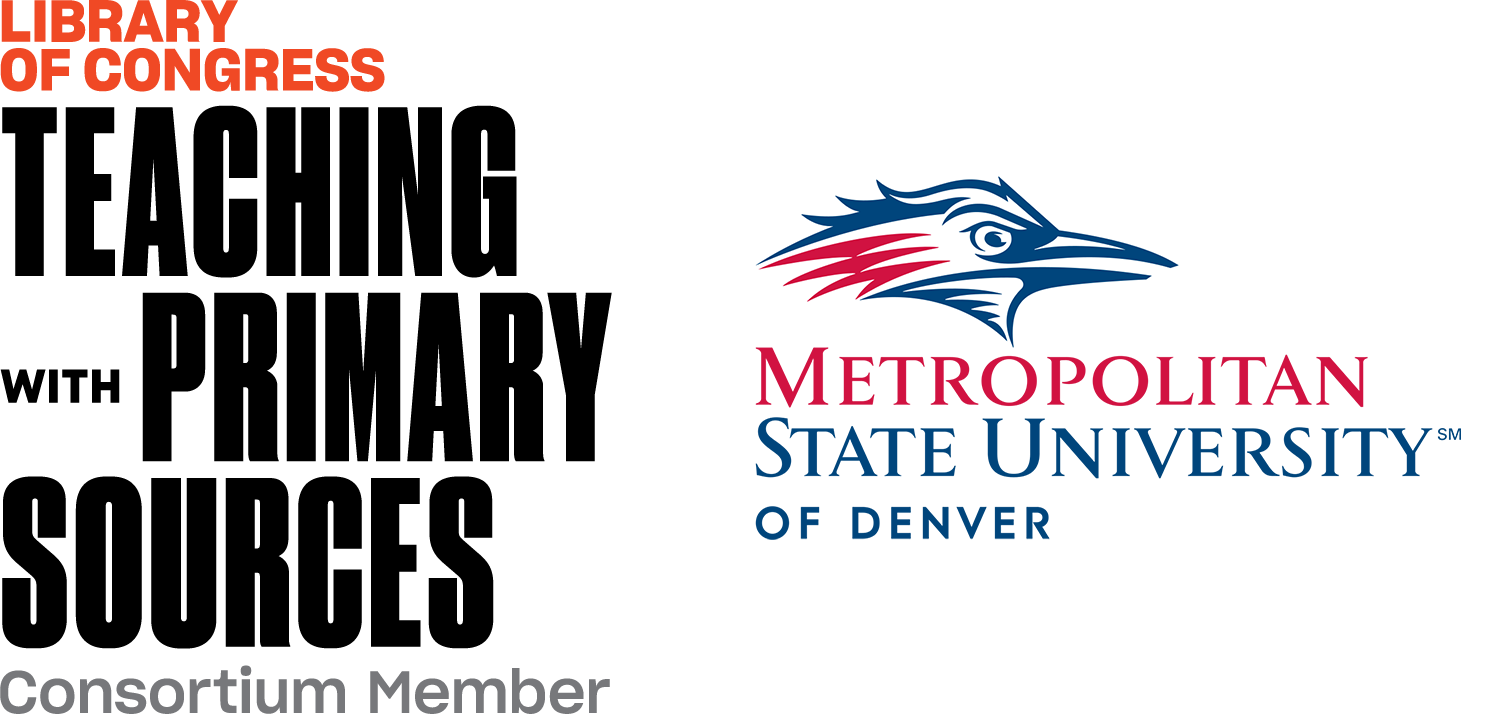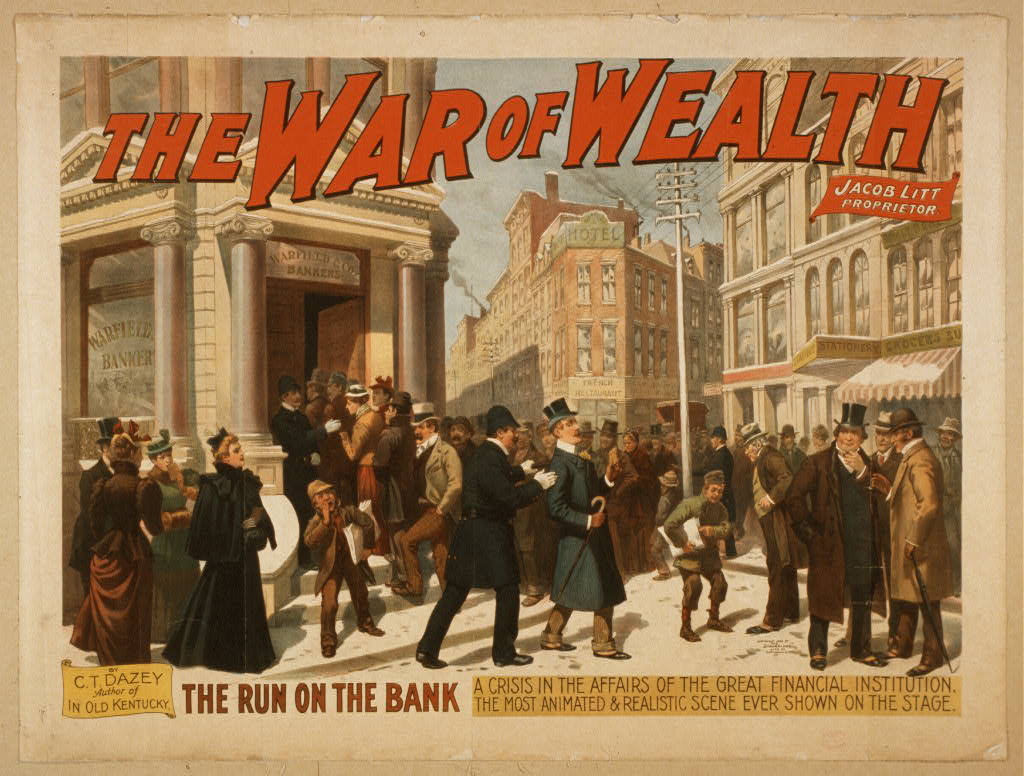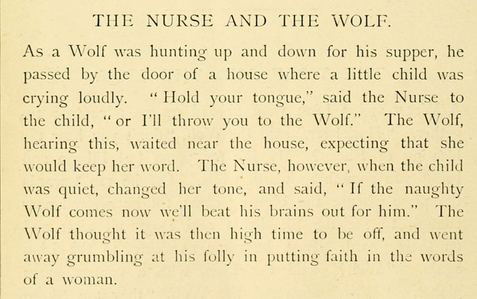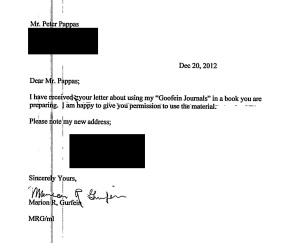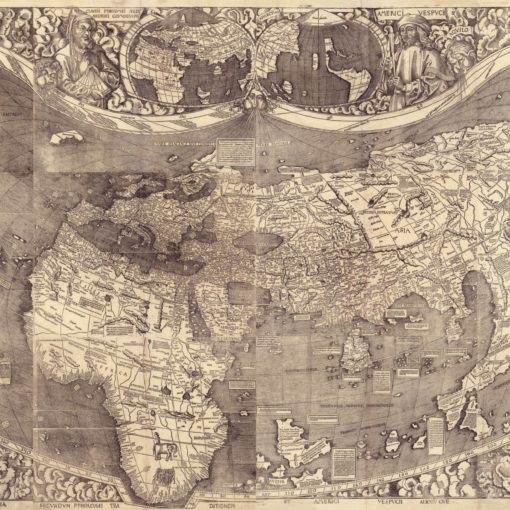Tl;dr: Brain Movers is another teaching tool you can put in your toolbox that works synchronously or asynchronously, and online or offline. Forty-seven Brain Movers explained in detail below can be freely accessed and used to build visual literacy skills through quick, repetitious primary source analysis. We encourage you to copy and adapt them for your own classroom goals.
*Brain Movers is an idea adapted from the amazing Two Geeky Teachers, Michelle Pearson and Laura Israelsen.
The idea here is to utilize primary sources to help fill in down-time in your classroom with short analyses to prep students’ thinking and get their brains moving. Brain Movers can help introduce students to new topics, encourage them to share their own background knowledge with other classmates, and practice the skill of analyzing visual media on a daily basis.
Down-time in the classroom, you say? Not for you, of course, but how about your students? For example, when you’re taking attendance, throw a Brain Mover up on the projector for students to complete in a journal or random piece of paper. The key to building up analysis skills is continuous practice, not necessarily correctness. So, no need to grade students on their work, making the effort on the teacher’s part minimal.
Easily Primary Source Integration
These Brain Movers aren’t meant to be the end-all be-all, but they can provide an easy way to integrate primary sources into your class. Since they are Google Docs, they are easily adaptable for your own classroom and shareable with your students. See below for instructions on how to make your own.
The analysis for each is modeled after the Library of Congress primary source analysis tool that focuses on foundational analysis: Observe, Reflection, and Question. On the first page of each document you’ll find a primary source, and suggested questions to help students with their analysis.
When you use a Brain Mover, you will only need to project the first page for the students to see. It will look best when viewed in full screen. If you are having trouble fitting the full page on one screen, click on View at the top, and then click on Zoom to adjust the size.
On the second page you will find the citation information. Included are:
- links to the full primary source set at the Library of Congress,
- the bibliographic page for the primary source,
- a link to the pdf of the primary source (which is extremely helpful if you want to print it off),
- a link to the Primary Source Analysis Tool,
- and, a link to “Foundations: Analyzing Primary Sources from the Library of Congress,” an hour long webinar from the Library’s educational resource specialists that provides insight into effective primary source analysis
We’ve created a Google Folder with 47 different Brain Movers. Each Google Doc contains a visual from one of the primary source sets at the Library of Congress. These sets on the Library of Congress Teachers page were created and curated by educators, so you know they are relevant. Each set on the Library’s website contains not only a collection of primary sources pertaining to the topic, but also a teacher’s guide that includes background information, suggestions for instruction, and additional resources. A full list can be found below.
All of the Brain Movers documents can be accessed at this Google Folder. Please feel free to copy the documents and adapt them for your own use. To make a copy of a Google Doc, click on File > Make a Copy. Then, you will be able to organize and name your file on your own Google Drive. For more information on how to make a copy of a Google Doc, click here.
Create your own!
Since these are easily adaptable, we encourage you to use primary sources that fit with your own classroom goals. Consider using an image to introduce a lesson to pre-assess their knowledge; use a political cartoon in the middle of a lesson to assess growth; or, use a map at the end of a lesson for a post-assessment. The possibilities are as endless as the primary sources you can find!
In order to create your own Brain Mover:
- Make a copy of one of the pre-built Brain Movers.
- Rename the Google Doc to fit your purposes.
- Replace the current image with an image of your choice by clicking on Insert > Image.
- To crop the image down to size, right click on the image and then click Crop Image. Try to crop out anything that might not be relevant to the image, or zoom in on one particular area of interest.
- To resize the image, click on the image and use the corner side adjusters on the image frame to proportionally resize the image. Try to make the image as big as possible so students can clearly see the image projected.
- If needed, replace any of the question or statement starters with your own.
- Finally, replace the citation info to ensure you have links to the original source if you ever need to find it again.
We hope these resources will help get your students’ brains moving and encourage inquiry and critical thinking skills, whether that is during down-time or as a scheduled activity.
Try it out and see what you think! Let us know if you have any feedback.
Full list of brain movers
Full list of brain movers and primary sources used.
- Abraham Lincoln: Rise to National Prominence
- Alexander Hamilton
- American Authors in the Nineteenth Century: Whitman, Dickinson, Longfellow, Stowe, and Poe
- Baseball Across a Changing Nation
- Charts and Graphs
- Children’s Lives at the Turn of the Twentieth Century
- Civil War Images: Depictions of African Americans in the War Effort
- Civil War Music
- Civil War Photographs: New Technologies and New Uses
- Civil War Soldiers’ Portraits: The Liljenquist Family Collection
- The Civil War: The Nation Moves Towards War, 1850-61
- The Constitution: Mapping America
- Dust Bowl Migration
- Found Poetry
- The Harlem Renaissance
- Hispanic Exploration
- Immigration Challenges for New Americans
- Immigration Challenges for New Americans 2
- The Industrial Revolution in the United States
- The Inventive Wright Brothers
- Jamestown
- Japanese American Internment
- Jim Crow and Segregation
- LGBTQ Activism and Contributions
- Maps From The World Digital Library
- Mexican American Migrations and Communities
- The NAACP: A Century in the Fight for Freedom
- Native American Boarding Schools
- Native American Boarding Schools 2
- Natural Disasters
- The New Deal
- Political Cartoons and Public Debates
- Presidential Speeches
- Rosa Parks
- Scientific Data: Observing, Recording, and Communicating Information
- The Spanish-American War: The United States Becomes a World Power
- Symbols of the United States
- Thanksgiving
- Transportation
- Understanding the Cosmos: Changing Models of the Solar System and the Universe
- Veterans’ Stories: Struggles for Participation
- Washington, Jefferson, and Lincoln: Three Great Presidents
- Weather Forecasting
- Westward Expansion: Encounters at a Cultural Crossroads
- Women in Science and Technology
- Women’s Suffrage
- World War I
